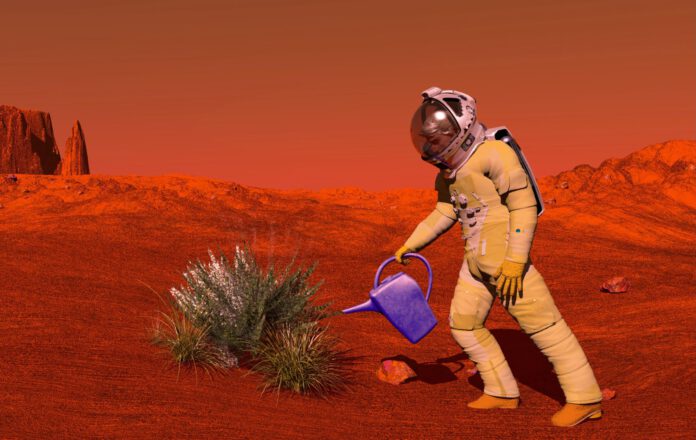
Imagining a Life on Mars? It’s Not as Easy as It Seems
Have you fantasized about the idea of living on Mars? If so, you need to be prepared to do hard work, as food supplies from Earth aren’t an option. Your future sustenance will depend solely on your ability to garden, and researchers suggest an organized mess might be the best approach. Rather than randomly planting, the trick lies in finding the perfect balance and encouraging symbiotic relationships among different plants. These insights are part of a recent publication in PLoS ONE journal.
The Right Balance in the Martian Garden
The study conducted by scientists involving tomatoes, peas, and carrots in different soil types, demonstrated that plants can thrive in semi-disorganized conditions given the right combination of factors. According to researcher Wieger Wamelink, who contributed to the study, they were surprised at how well the tomatoes did. However, the carrots were less successful, probably due to the peas and tomatoes growing large and blocking the light. Future experiments aim to evoke a better species balance.
The Complexities of Martian Agriculture
Creating a viable garden on Mars is decidedly more complex than imagined. The type of soil forms the first hurdle. Mars regolith (the layer of loose, fragmented material covering solid bedrock) is poorly suited for cultivation compared to that of Earth, because it severely lacks nutrients essential for plant growth, like nitrogen. Such challenges have prompted researchers to introduce bacteria, specifically Rhizobium leguminosarum, to assist plant growth.
This bacterium established a symbiotic relationship with the peas, helping them flourish by converting atmospheric nitrogen into ammonia, which other plants can also then use.
Cooperating Plants
Every plant selected for the experiment had a specific role. For instance, tomatoes and peas enjoy growing together, allowing peas to ride on the success of tomatoes. Carrots were chosen for their subterranean growth, theoretically optimising their benefit from leaking ammonia. Despite the intricate planning, the strong growth of tomatoes inadvertently led to competition by stealing light from other species.
The Role of Bacteria
The aiding bacterium, R. leguminosarum, showed varied performance too; failing to thrive in Mars regolith but flourishing in sandy soil. According to Wamelink, the timing of bacterial introduction and moisture management proved critical. Despite these challenges, Wamelink is optimistic about finding the optimal conditions for the bacteria’s functions, following previous successful experiments conducted with beans.
Moving Forward
The research has important implications as it makes clear that establishing a garden on Mars has significant hurdles to overcome. Despite this, the experiment highlighted the potential benefits of particular plant combinations, such as tomatoes and peas. Wamelink and his team plan on testing more vegetables for their potential contribution to Mars agriculture, particularly focusing on potatoes, given their rapid growth and high yield – ideal traits for space cultivation.
Challenges Ahead: Perchlorate
A major obstacle remains, however – perchlorate, a salt abundant in Martian soil, which is toxic to both plants and humans. The researchers are conducting further experiments, hoping that salt-tolerant plants might be able to filter perchlorate from the soil. Preliminary experiments with salt-tolerant plants like salicornia have yielded promising results.
A Glimpse of the Future Martian Garden
To grow crops on Mars, greenhouse farming is a necessity due to the extremely cold temperatures, lack of liquid water, low atmospheric pressure, and high radiation. Greenhouses would utilize available Martian resources like regolith, water, and building elements. Wamelink envisions these facilities hosting a variety of cultivation techniques and species, many fertilizer-producing species and pollinators, and mealworms as a source of protein. Currently, they are capable of growing over 25 types of vegetables in simulated Martian regolith, keeping hopes high for a future mission to Mars, potentially in the early 2030s.
While much work remains to be done, one thing seems clear; if you ever find yourself working in a future Martian greenhouse, don’t worry about keeping things perfectly tidy.











